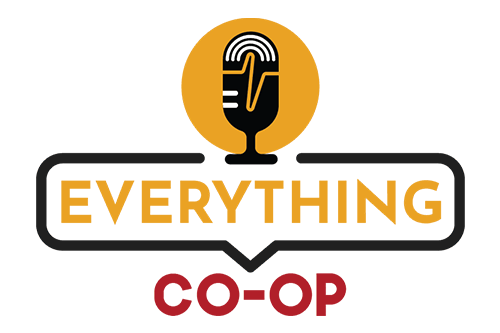Purchasing Cooperative executives and staff attending NCBA CLUSA’s Co-op IMPACT Conference next week will spend the majority of their time in workshops and group discussions that will explore some of their toughest operating challenges. Diving headfirst into topics like utilizing Business Intelligence, marketing the co-op advantage and implementing effective product training to drive sales, these workshops will provide valuable takeaways for near-term strategic planning efforts.
For longer-term strategic thinking, however, NCBA CLUSA is excited to welcome University of Colorado Scholar in Residence Nathan Schneider to deliver a keynote address called “Let’s Claim the Internet for Co-op Country” to attendees of our Purchasing Co-op Track, courtesy of our Silver Sponsor, Corcentric.
Schneider’s keynote will make the case that the best way for purchasing co-ops to escape the cycle of playing catch-up with big boxes and online retailers is to adopt innovative technologies in distinctly cooperative ways in order to optimize their inherent co-op advantage. Built on the principles of the platform economy, Schneider’s vision of “Platform Cooperativism” will challenge purchasing co-ops to think about ways to engage their members more cooperatively and look to the many emerging disruptive strategies that startups and “people-driven” platform businesses like Uber, AirBnb and others have used to become the 21st century standard in their line of business.
As an original disruptor in automated payment processing, Corcentric’s solutions have revolutionized how the world’s largest organizations manage and protect their financial assets. Over the last few years, they’ve also been developing their Indirect Spend platform and are pleased to be able to offer this seamless blend of technology and human engagement to the bottom-line benefit of purchasing co-ops and their members. In advance of IMPACT 2017 and to help highlight the vast potential of embracing elements of the platform economy, below are Corcentric’s “4 Ways To Stop Throwing Money Away on Indirect Spend.”
4 Ways to Stop Throwing Money Away on Indirect Spend
By Reggie Peterson, Director of Indirect Procurement, Corcentric
Are you leaving thousands of dollars on the table due to inefficient indirect spend protocols? Here are the four steps you need to take to gain control over your indirect spend
Look around your office. Most of what you see, from pens to stationary to printers and more all fall under the category of indirect spend. Many companies treat indirect spend, which is procurement not directly associated with a business’s core competencies, as minor ad hoc purchases that require no strategy to perform. But that attitude can result in a situation where hundreds of thousands of dollars are essentially left on the table for a single given business in a single year. These purchases are often “invisible” to management resulting in what we term, “dark purchasing.”
But new technology and solutions are available that will help bring dark purchasing into the light. However, although the availability of third party procure-to-pay technology and services to help businesses manage their indirect spend is growing, a majority of the options available offer piecemeal solutions, rather than holistic solutions. This lack of centralization and compliance can result in higher costs, exorbitant shipping costs, fewer bulk discounts, double-purchasing, and more.
Properly managed indirect spend through a third-party P2P provider presents a wealth of savings and cost avoidance opportunities for this new fiscal year. Here are some ways you can set your company up for success with indirect spend:
4 steps that will help gain control over your indirect spend
- Aggregate indirect expenses company-wide. While your company’s manufacturing department and accounting department might not have much in common, the success of both departments does rely on access to indirect tools, such as staplers and computers. In large organizations, siloed departments, purchasing independently, can wreak havoc on procurement’s ability to gain company-wide efficiencies. By aggregating the needs of all departments into larger bulk orders and using vetted, preferred suppliers, indirect procurement can implement company-wide contracts that will allow for benefits such as volume discounts and favorable contract terms.
- Educate employees on indirect spend. Having a world-class procurement system in place can only go so far if employees are not aware of supplier performance, proper protocol and practices. By cutting down on employee purchasing outside of established protocol, financial executives eliminate the need for cumbersome and risky expense reporting and ensure all purchases made are saving money for the bottom line. By adding and monitoring some general performance metrics, managers of indirect spend can measure contract compliance, customer satisfaction, and cost competitiveness, as well as promote continuous improvement.
- Strive for centralization. Large organizations can often fall prey to disorganization and decentralization through lack of communication and transparency. Effective spend management works best when buys are centralized and coordinated across departments. This is best handled through a highly visible and transparent cloud-based system that allows financial executives to monitor purchases in real-time.
- Make it automated and holistic. Businesses are looking to automate back-end processes and indirect spend in order to focus on their core competencies and reduce the number of man-hours needed to manage these processes. In the past few years, B2B businesses have implemented piecemeal technology solutions from third party vendors specializing in various components of the procure-to-pay process. Going forward, we can expect to see companies moving to single-source solutions and suites that can support all end-to-end financial processes including indirect spend management.
For many organizations, problems with indirect purchasing can go much deeper than expected and can destroy budgets with little to no acknowledgement.
Download this white paper to see how you can defeat dark purchasing and gain control over your indirect spend.


